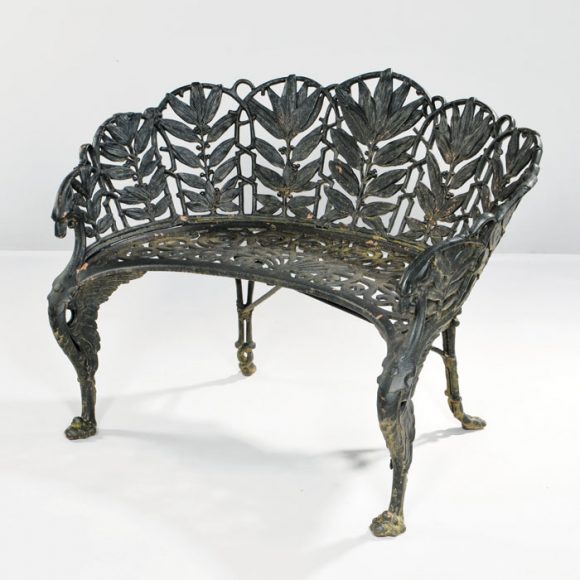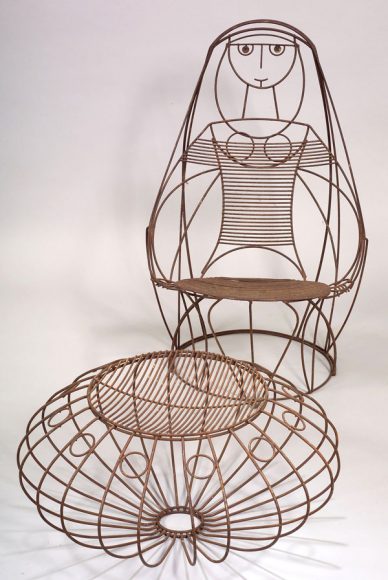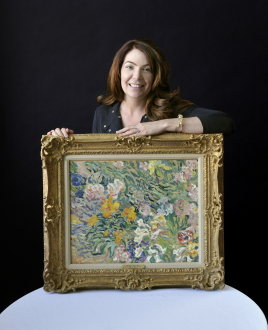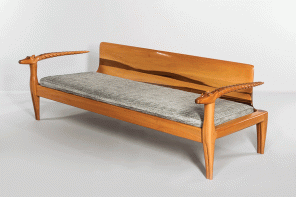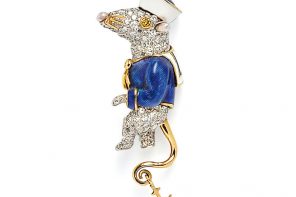Warm breezes and soft sunshine have always lured people to work, play, socialize and relax in the fresh air. Happily there is an abundance of furniture and accessories to make plein air living comfortable, convenient and stylish.
Cave dwellers probably sat on a favorite sunny rock or stump near the entrance to their dark homes. The ancient Egyptians made outdoor furniture of swamp grasses. The Greeks and Romans enjoyed garden benches of stone, while in the Middle Ages turf benches were the fashion. In more recent times, the Windsor chair — portable, inexpensive, sturdy — was designed for outdoor use in 18th century English gardens.
Since the Industrial Revolution, outdoor furniture has come into its own. That movement created successive new technologies and materials to make pieces that could withstand a shower or a spell of cold weather as well as an economy that made possible the leisure to enjoy sitting in gardens and parks.
Beginning in the 19th century, mass-produced metal furniture and lawn ornaments became widely fashionable. Wrought iron, popular in the early 1800s, was succeeded by less expensive cast iron. The manufacturing process allowed for an endless variety of forms and shapes. Motifs from nature such as fruits and flowers were especially popular.
Admirers of the Victorian and Edwardian look can find fine antique examples of period garden furnishings. In addition to iron, there is also abundant vintage wicker and rattan outdoor furniture. Lightweight, attractive and often whimsical in shape, it frequently has condition issues that can be difficult and expensive to repair.
Garden furniture blossomed anew in the mid-20th century. “Patio living” became an important part of the informal lifestyles that evolved after World War II. Modern technology supplied materials that were more durable and versatile than ever. Steel, plastics and aluminum gave designers the freedom to invent new shapes and to create pieces that could be used indoors as well as out.
Among the leading midcentury trendsetters whose pieces are much sought after today were John Salterini, Frank Gehry and Russell Woodward. John Risley was another notable mid-mod furniture designer whose whimsical figural pieces are much in demand. Walter Lamb’s iconic outdoor furniture of the 1940s and ’50s featured an innovative combination of heavyweight cotton cording used on yachts and bronze tubing from U.S. Navy surplus.
Knoll, founded in 1938 and still active today, produced some of the most famous and influential furniture of American Modernism. Harry Bertoia, Mies van der Rohe, Eero Saarinen and Marcel Breuer all contributed to Knoll’s sleek functional aesthetic. Many of the designs they created in the 1950s were intended for outdoor as well as indoor use and have remained in continuous production. Age matters. Pieces produced before 1970 bear labels saying “Knoll Associates.” Later examples are labeled “Knoll International.”
Chairs, ottomans, tables and lounges in every conceivable combination of metal, resin and glass are the mainstays of garden furniture, but there are other choices, too. Durable waterproof ceramic is an enduring favorite for outdoor use, especially in the form of garden seats. Barrel-shaped Chinese examples — traditional blue and white or decorated with richly colored enamels — are the most familiar.
Ceramic garden seats were also made by many American and European potteries. In the late 19th and early 20th centuries, leading English firms such as Mintons, Wedgwood, George Jones and Wardle & Co. produced large numbers of garden seats. As well the traditional cylindrical forms decorated with floral themes, there are those with figures such as sturdy elephants and playful monkeys.
Patios and gardens are outdoor living rooms. Like indoor spaces these fresh-air retreats ask to be accessorized. In addition to stone, metal, and ceramic statuary, there are garden orbs, armillary spheres, sundials, fountains, niches — the list is practically limitless.
Outdoor living has delighted people throughout history. Furniture and accessories in the styles of every era from antiquity to today are available to be enjoyed in the fresh air. Traditional, Modernist, Futurist — whatever your taste, it can be reflected in the outdoors as well as in the interior of your home.
Visit Skinnerinc.com to explore available garden furniture at auction.

